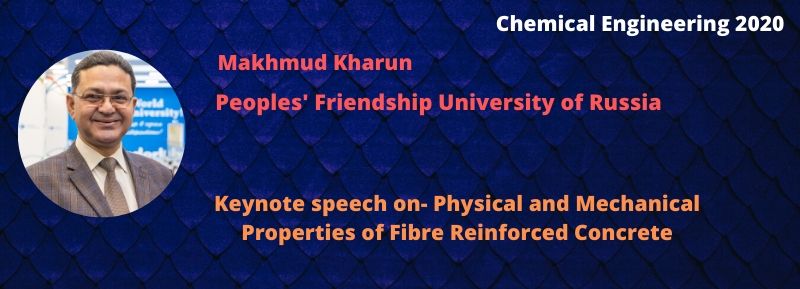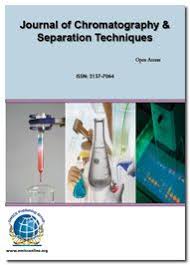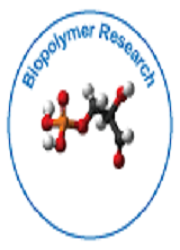Theme:
Chemical Engineering 2020
Conference Series LLC Ltd welcomes everyone throughout the world to “6th International Conference on Advances in Chemical Engineering & Technology” which is going to be held in March 02-03, 2020 in London, UK.
Theme: New advancement and technology in chemical engineering
After the productive venture of series chemical engineering around the globe Conference Series LLC Ltd is overwhelmed to welcome all the participants to CME Accredited “6th International Conference on Advances in Chemical Engineering & Technology” will be held on March 2-3, 2020 at London, UK. The CME Accredited conference is going to be organized round the theme " New advancement and technology in chemical engineering” which incorporates prompt Keynote presentations, Oral talks, Poster displays and Exhibitions. CME Accredited Chemical Engineering 2020 is sixth conference that is a global platform to discuss and learn about Chemical Engineering, Catalysis Engineering, Chemical Reaction Engineering, Process Heat Transfer, Mass transfer as separation processes, Environmental and sustainable chemical engineering and much more.
Chemical engineering is a discipline influencing numerous areas of technology. In broad terms, chemical engineers conceive and design processes to produce, transform and transport materials beginning with experimentation in the laboratory followed by implementation of the technology in full-scale production
Scope:
Chemical engineers work in manufacturing, pharmaceuticals, healthcare, design and construction, pulp and paper, petrochemicals, food processing, specialty chemicals, microelectronics, electronic and advanced materials, polymers, business services, biotechnology, and environmental health and safety industries, among others.
Chemical engineers have been improving our well-being for more than a century. From the development of smaller, faster computer chips to innovations in recycling, treating disease, cleaning water, and generating energy, the processes and products that chemical engineers have helped create touch every aspect of our lives.
Why to attend?
6th International Conference on Advances in Chemical Engineering & Technology will provide a scientific environment and a platform for the participants to exchange ideas, establish research collaboration and networking. With members from around the world focused on learning about Chemical Reaction Engineering, Process Heat Transfer, Mass transfer separation processes and many more. This is your best opportunity to reach the largest assemblage of participants in field of Chemical Engineering to meet with current and potential customers, make a splash with a new product line, and receive name recognition at this 2-days conference.
Target of audience:
- Chemical Engineers
- Chemists
- Chemical Scientists
- Chemical engineering Students
- Chemical Industries
- Chemical engineering Associations and Societies
- Biochemical engineers
- Polymer engineers
- Chemical Companies
- Petroleum Engineers
- The people who are specialized with geologists, geophysicists, reservoir engineers, production engineers, Chemical Engineers.
Track 1: Chemical Engineering
Chemical Engineering Conference 2020 addresses the physical science application (e.g., chemistry and physics), and life sciences with mathematics and economics, the process of changing raw materials or chemicals into more useful or valuable forms. In addition to develop useful materials, modern chemical engineering is also concerned with pioneering valuable new materials and new methods such as nanotechnology, fuel cells and biomedical engineering. The global chemical industry and market analysis, estimated at U.S. $2.4 trillion, is one of the fastest growing business sectors of the manufacturing industry.
Sub tracks:
- Applications of Chemical engineering
- Plant Utilities
- Inorganic and Physical Chemistry
Related Conferences: Chemical Engineering and Catalysis, 3rd Edition of Chemistry & Chemical Engineering conference
Related Societies and Associations: Society of Chemical Engineers of Nepal, Society of Chemical Engineers Japan (SCEJ), Danish Chemical Society, Colombian Association of Chemical Engineering Environmental and Energy Study Institute, Society of Chemical Engineers New Zealand, The Australian and New Zealand Federation of Chemical Engineers (ANZFChE), Mexican Institute of Chemical Engineers (IMIQ), Ethiopian Society of Chemical Engineers (ESChE), Canadian Society for Chemical Technology, Chinese-American Chemical Society China.
Track 2: Catalysis Engineering
Catalysts are complex materials that must fulfill many criteria on multiple scales, in order to be successfully used in catalytic processes. There are different types of catalysis process like photo catalysis, Thermo catalysis, and Nano catalysis etc. Heterogeneous catalysts act in a different phase than the reactants. Most of the heterogeneous catalysts are solids that act on substrates in a gaseous or liquid reaction mixture. Industrial process chemistry is the key components of heavy industry. Industrial processes are procedures involving chemical, physical, electrical technologies to aid in the manufacturing of an item that usually carried out on a very large scale.
Sub tracks:
- Chemical Kinetics and Catalysis
- Catalysis and Pyrolysis
- Catalysis and Zeolites
- Environmental Catalysis
- Industrial catalysis
Related Conferences: Chemical Engineering and Catalysis, 3rd Edition of Chemistry & Chemical Engineering conference
Related Societies and Associations: International Associations of catalysis societies; Czech Society of Chemical Engineering; American Chemical Society; Israel Institute of Chemical Engineers (IIChe); Joint Bioenergy Institute; Sandia National Laboratories
Track 3: Chemical Reaction Engineering
Chemical reaction engineering involves organizing plant processes and conditions to ensure optimal plant operation to construct models for reactor process design and analysis. Many applications of chemical engineering involved in the day to day life like rubber, plastic, cement, sugar, ceramic etc.
Sub tracks:
- Electrochemical processes and reactors
- High pressure technology and processes
- Multiphase flow and reactors
- Micro-reactors
Related Conferences: Chemical Engineering and Catalysis, 3rd Edition of Chemistry & Chemical Engineering conference
Related Societies and Associations: Canadian Society for Chemical Engineering (CSChE); Society of Chemical Engineers New Zealand; Biomass Power Association; Bioenergy Association of New Zealand; Bioenergy Association of California; American Solar Energy Society (ASES)
Track 4: Process Heat Transfer
Heat Transfer is the process of transfer of heat from high temperature reservoir to low temperature reservoir. In terms of the thermodynamic system, heat transfer is the movement of heat across the boundary of the system due to temperature difference between the system and the surroundings. The heat transfer can also take place within the system due to temperature difference at various points inside the system. The difference in temperature is ‘potential’ that causes the flow of heat and the heat itself is called as flux.
Heat exchangers are devices built for efficient heat transfer from one fluid to another. They are widely used in engineering processes and include examples such as intercoolers, preheaters, boilers and condensers in power plants. Heat exchangers are becoming more and more important to manufacturers striving to control energy costs.
Sub tracks:
- Heat Exchangers
- Thermal Resistance
- Climate Engineering
- Fin (extended surface)
- Heat Transfer Coefficient
- Conduction, Convection and Radiation
Related Conferences: Chemical Engineering and Catalysis, 3rd Edition of Chemistry & Chemical Engineering conference
Related societies and associations: Society of Chemical Engineers, Thai Institute of Chemical Engineering and Applied Chemistry, Renewable Fuels Association, World Bioenergy Association, AEBIOM European Bioenergy Association, The Bioenergy Association of Finland.
Track 5: Mass transfer as separation processes
The driving force for mass transfer is typically a difference in chemical potential, when it can be defined, though other thermodynamic gradients may couple to the flow of mass and drive it as well. A chemical species moves from areas of high chemical potential to areas of low chemical potential. Mass transfer is used by different scientific disciplines for different processes and mechanisms. Mass transfer occurs in many processes, such as absorption, evaporation, drying, Crystallization, membrane filtration, and distillation. Distillation is a widely used method for separating mixtures based on differences in the conditions required to change the phase of components of the mixture. Absorption is the process in which a fluid is dissolved by a liquid or a solid (absorbent). Adsorption is the process in which atoms, ions or molecules from a substance (it could be gas, liquid or dissolved solid) adhere to a surface of the adsorbent.
Sub tracks:
- Drying
- Extraction
- Distillations
- Diffusion MRI
- Vapor Liquid Equilibrium
- Absorption and Adsorption
- Humidification and Air Conditioning
- Diffusion and Mass Transfer Coefficients
- Double diffusive convection and Drag force
Related Conferences: Chemical Engineering and Catalysis, 3rd Edition of Chemistry & Chemical Engineering conference
Related societies and associations: Brazilian Association of Chemical Engineering, Colombian Association of Chemical Engineering, Environmental and Energy Study Institute, American Biomass Association, Bioenergy Association of California, American Solar Energy Society (ASES).
Track 6: Separation Techniques
A Separation technique is a process to achieve any mass transfer occurrence that converts a mixture of substances into two or more individual product mixtures. Separations may differ in chemical properties or physical properties such as size, shape, mass, density, between the constituents of a mixture. They are often categorized according to the particular differences they use to achieve separation. Separation process consists of different techniques like distillation, extraction, zone refining etc. Adsorption is the union of atoms, ions or molecules from a gas, liquid to a surface. Distillation is a type of technique used for liquid mixtures with different boiling points. Chromatography separates dissolved particles by different interaction.
Sub tracks:
- Solid phase extraction chromatography
- Oil water separation
- Winnowing
- Flotation – Dissolved air flotation, Froth Flotation, Deinking
- Zone refining
- Elutriation
Related Conferences: Chemical Engineering and Catalysis, 3rd Edition of Chemistry & Chemical Engineering conference
Related Societies and Associations: The Royal Australian Chemical Institute; Colombian Association of Chemical Engineering; The Chromatographic Society; British Mass Spectrometry Society; Czech Chemical Society; Royal Netherlands Chemical Society
Track 7: Transport Phenomenon
Modeling and analysis of transport phenomena are essential for many industrial applications. Transport phenomena involve fluid dynamics, heat transfer and mass transfer, which are governed mainly by momentum transfer, energy transfer and transport of chemical species respectively. Models often involve separate considerations for macroscopic, microscopic and molecular level phenomena. Modeling of transport phenomena requires, therefore, requires an understanding of applied mathematics.
Sub tracks:
- Momentum transport
- Energy transport
- Mass transport
Related Conferences: Chemical Engineering and Catalysis, 3rd Edition of Chemistry & Chemical Engineering conference
Related Societies and Associations: Society of Chemical Industry; Federation of European Biochemical Societies; Polymer Division of the Royal Australian Chemical Institute; Association for the Development of Biomaterials; Korean Chemical Society; Norwegian Chemical Society
Track 8: Thermodynamic Process
Thermodynamics mainly deals with the relationship between work, heat and other forms of energy. Thermodynamics applies to a wide range of subjects in science and engineering, mainly physical chemistry, chemical engineering, and mechanical engineering. Thermodynamic systems are theoretical constructions used to model physical systems that convert matter and energy in terms of the laws of thermodynamics.
Sub tracks:
- Chemical thermodynamics
- Thermodynamics material science
- Thermodynamics physics
- Molecular thermodynamics
- Applied thermodynamics
- Modern thermodynamics
Related Conferences: Chemical Engineering and Catalysis, 3rd Edition of Chemistry & Chemical Engineering conference
Related Societies and Associations: Mexican Institute of Chemical Engineers (IMIQ); The Society of Chemical Engineers Japan; America American Chemical Society; Society of Agricultural and Biological Engineers; World Biogas Association; Brazilian Association of Chemical Engineering
Track 9: Fluid Mechanics
Fluid Mechanics is the branch of science that reviews the conduct of fluids when they are in condition of motion or rest. Regardless of whether the fluid is at rest or motion, it is subjected to various forces and distinctive climatic conditions and it carries on in these conditions according to its physical properties. Fluid mechanics manages three parts of the liquid: static, kinematics, and flow perspectives. Industrial Applications of Fluids.
Sub tracks:
- Refrigerators and Air Conditioners
- Nuclear power plants
- Heat Engines
- Operating Various Instruments
- Hydroelectric Power Plants
- Thermal Power Plants
- Fluids as a Renewable Energy Source
- Hydraulic machines
- Automobiles
Related Conferences: Chemical Engineering and Catalysis, 3rd Edition of Chemistry & Chemical Engineering conference
Related societies and associations: Association of Chemical Engineers of Uruguay, Colombian Association of Chemical Engineering, Brazilian Association of Chemical Engineering, Argentinian Association for Chemical Engineers, Society of Chemical Engineers New Zealand, Australian Federation of Chemical Engineers, Mexican Institute of Chemical Engineers (IMIQ), National Organization for the Professional Advancement of Black Chemists and Chemical Engineers(NOBCChE), Canadian Society for Chemical Engineering(CSChE), Association of Energy Engineers (AEE)
Track 10: Material Sciences
The interdisciplinary field of materials science, also commonly termed materials science and engineering is the design and discovery of new materials, particularly solids. The intellectual origins of materials science stem from the Enlightenment when researchers began to use analytical thinking from chemistry, physics, and engineering to understand ancient, phenomenological observations in metallurgy and mineralogy.
Sub tracks:
- Material science
- Material Engineering
Related Conferences: Chemical Engineering and Catalysis, 3rd Edition of Chemistry & Chemical Engineering conference
Related societies and associations: Association of Chemical Engineers of Uruguay, Colombian Association of Chemical Engineering, Brazilian Association of Chemical Engineering, Argentinian Association for Chemical Engineers, Society of Chemical Engineers New Zealand, Australian Federation of Chemical Engineers, Mexican Institute of Chemical Engineers (IMIQ), National Organization for the Professional Advancement of Black Chemists and Chemical Engineers(NOBCChE), Canadian Society for Chemical Engineering(CSChE), Association of Energy Engineers (AEE).
Track 11: Environmental and sustainable chemical engineering
Environmental Engineering basically is a branch of applied science which involves the issues of energy preservation, protection and control of wastes from human and animal activities. It also includes waste water management, air pollution control, recycling, waste disposal, radiation protection, industrial hygiene, animal agriculture, environmental sustainability, public health and environmental engineering law.
Sub tracks:
- Solid waste management
- Environmental integrated management and policy making
- Environmental friendly materials
- Environmental auditing; Environmental impact assessment
- Environmental economics, policies and management
Related Conferences: Chemical Engineering and Catalysis, 3rd Edition of Chemistry & Chemical Engineering conference
Related societies and associations: Canadian Society for Chemical Engineering (CSChE), Society of Chemical Engineers New Zealand
Track 12: Polymer Technology
In chemical compounds, polymerization occurs in a variety of reaction mechanisms that differ in complexity due to functional groups present in reacting compounds. Biopolymers contain monomeric units that are covalently bonded to the formation of larger structures. Biopolymers are polymers processed by living organisms. Cellulose is the most common organic compound for biopolymer. The deformation micromechanics of cotton and flax single natural cellulose fibers in relation to their use in cellulose-based networks and composite materials are reported.
Sub tracks:
- Polymer Material Science and Engineering
- Applications of Polymers
- Polymers in Biotechnology, Medicine and Health
- Polymer Physics
Related Conferences: Chemical Engineering and Catalysis, 3rd Edition of Chemistry & Chemical Engineering conference
Related Societies and Associations: Argentinian Association for Chemical Engineers; Asian Polymer Association; The Scandinavian Society for Biomaterials; Polymer Division of the Royal Australian Chemical Institute; The polymer society; Polymer processing society
Track 13: Water Technology & Innovations
Currently, there is an emerging threat to the water resources. Hence Scientists and researchers are applying new tools and techniques to solve the various challenges and develop innovative methods to conserve and treat the water resources available.
Sub tracks:
- Water Treatment Technology
- Waste water treatment technologies
- Computer applications in water treatment
Related Conferences: Chemical Engineering and Catalysis, 3rd Edition of Chemistry & Chemical Engineering conference
Related Societies and Associations: Japan Bio industry Association, Japan; Biotech Research Society, India; Bioenergy Crop Research Institute; American Council on Renewable Energy; American Biofuels Council
Track 14: Biochemical Engineering
Biochemical Engineering is an essential area in modern biotechnology. Biochemical engineering includes Bioreactor and fermenter design aspects, Industrial biotechnology, Photobioreactor electrochemical energy conversion, Biological hydrogen production (Algae), Biofuel from algae, Bioreactor landfill, and Moss bioreactor.
Sub tracks:
- Biochemistry
- Cell culture Engineering
- Biochemical and Bio Molecular Engineering
- Biosensors and Biodevices
- Environmental Bioengineering
- Biofuels
Related Conferences: Chemical Engineering and Catalysis, 3rd Edition of Chemistry & Chemical Engineering conference
Related Societies and Associations: American Institute of Chemical Engineers (AIChE); Association of Energy Engineers (AEE); International Plasma Chemistry Society; The Royal Australian Chemical Institute; Belgian Society of Biochemistry Belgium; World Biogas Association
Track 15: Petroleum Engineering
Petroleum engineering is concerned with the production of hydrocarbons, which can be either crude oil or natural gases. Exploration and Production are deemed to fall within the sector of the oil and gas industries. Chemical plants produce olefins by a steam cracking of natural gas liquids like ethane and propane. Aromatics are produced by a process of catalytic reforming of naphtha. Petroleum refining processes are nothing, but chemical engineering processes used in petroleum refineries to change crude oil into useful products such as liquefied petroleum gas (LPG), gasoline, petrol, kerosene, jet fuel, diesel oil and fuel oils.
Sub tracks:
- Advances in Petroleum Engineering
- Petrochemical engineering
- Fuels and Refining
- Petroleum Geology
- Petroleum Engineering and its Industrial Application
- Petroleum Additives: Synthesis and Application
- Petroleum Exploration & Field Management
Related Conferences: Chemical Engineering and Catalysis, 3rd Edition of Chemistry & Chemical Engineering conference
Related Societies and Associations: Mexican Institute of Chemical Engineers (IMIQ) Argentinian Association for Chemical Engineers; Australian Institute of Petroleum; Australian Petroleum Production and Exploration Association; Canadian Society of Petroleum Geologists; Dhahran Geoscience Society
Track 16: Chemical Applications in Producing Oil and Gas
Petroleum Chemistry is made of a mixture of different hydrocarbons. The most prolific hydrocarbons found in the chemistry of petroleum are alkanes; these also sometimes known as branched or linear hydrocarbons. A significant percentage of the remaining chemical compound is the made up of aromatic hydrocarbons and cycloalkanes. Additionally, petroleum chemistry contains several more complex hydrocarbons such as asphaltenes. Each geographical location and hence oil field will produce a raw petroleum with a different combination of molecules depending upon the overall percentage of each hydrocarbon it contains; this directly affects the coloration and viscosity of the petroleum chemistry. The primary form of hydrocarbons in the chemistry of petroleum is the alkanes, which are also often named paraffin’s. These are termed saturated hydrocarbons and the exhibit either branched or straight molecule chains.
The market size of composites in oil & gas industry is projected to reach USD 1.98 Billion by 2021, at a CAGR of 5.05% between 2016 and 2021. The increasing demand for non-corrosive and lightweight materials in the oil & gas industry and low maintenance cost of composites are the key drivers of the global market of composites in oil & gas industry.
Sub tracks:
- Enhanced oil recovery
- Fracturing fluids
- Oilfield chemistry
- Chemicals used in oil and gas production
- Nano-technologies used in oil and gas production
Related Conferences: Chemical Engineering and Catalysis, 3rd Edition of Chemistry & Chemical Engineering conference
Track 17: Coal and Natural Gas
Crude oil, coal and natural gas formed from the prehistoric matter of plants, animals, zooplankton and other life that was buried sometimes miles deep inside the Earth and subjected to high temperatures and high pressure over millions of years. These three so-called fossil fuels include a wide assortment of carbon-based substances.
Humans have known about petroleum, or crude oil, from centuries, but the substance wasn’t considered terribly interesting until the mid-1800s, when it was distilled into kerosene and found to be a good, cheap alternative to burning whale oil in oil lamps. At that time, only the wealthiest could afford whale oil, which was preferred over candles or animal fats. Americans and others worldwide quickly adopted petroleum and learned to make an unending stream of useful products from it. Simultaneously, a worldwide obsession with striking oil was born.
Coal is the most abundant fossil fuel in the world, according to the U.S. Energy Information Administration. It’s cheap, readily mined domestically and generated almost half of all electricity in the country in 2009 as well as more than 40 % of electricity produced globally. Though American coal is a domestic affair we don’t need to import it the fuel has caused substantial air pollution, as well as ground and surface water pollution from mercury and acid rain. Coal is also the source of countless mining and steady supply of greenhouse gases.
The artificial intelligence (AI) market is expected to be worth USD 16.06 Billion by 2022, at a CAGR of 62.9% between 2016 and 2022. The major drivers for the growth are increasingly large and complex datasets and Growing number of AI applications in various end-user industries. Moreover, the increasing adoption of AI-enabled products and software tools to improve consumer services further accelerate its market growth.
Sub tracks:
- Clean coal options
- Production of SNG from coal
- Coal processing
- Oil and gas diversification
- LNG market - Issues and trends
Related Conferences Chemical Engineering and Catalysis, 3rd Edition of Chemistry & Chemical Engineering conference
Track 18: Recent advances in Petrochemistry
Without continuous technological innovation, further energy savings will become increasingly difficult to attain. While petrochemical producers have made huge progress in energy reduction, they have almost reached a physical limit where any further reduction would not be of the same proportions as that already achieved. To continue the momentum of energy savings, the petrochemical sector is focusing on creating products with enhanced performance which in turn reduce energy consumption during their lifetime. Such examples include: Insulation in construction; lightweight plastics used in cars and transportation; solar panels; wind mills and water purification systems among many others.
The global analytical standards market is expected to be valued at USD 1.14 Billion in 2015, growing at a CAGR of 6.5% during the forecast period to reach USD 1.56 Billion in 2020. This market is mainly driven by factors such as rising demand for analytical instruments in proteomics & metabolomics and growing importance of analytical tests in drug approval. On the other hand, high cost of analytical instruments & standards is restricting the growth of the global analytical standards market.
Sub tracks:
- Teaching, Assessment, and Learning in University and Industries
- Technology, Simulation, and Education
- Continuing Professional Development
- Continuing Education
Related Conferences Chemical Engineering and Catalysis, 3rd Edition of Chemistry & Chemical Engineering conference
Track 19: Environmental Engineering
Environmental Engineering basically is a branch of applied science which involves the issues of energy preservation, protection, and control of wastes from human and animal activities. It also includes wastewater management, air pollution control, recycling, waste disposal, radiation protection, industrial hygiene, animal agriculture, environmental sustainability, public health and environmental engineering law.
Sub tracks:
- Earth Science and Structure
- Global Warming
- Environment and Pollution
Related Conferences: Chemical Engineering and Catalysis, 3rd Edition of Chemistry & Chemical Engineering conference
Related Societies and Associations: Intergovernmental Panel on Climate Change; US Climate Variability and Predictability Program; American Association of Petroleum; The European Petrochemical Association; Society of Petroleum Engineers; European Polymer Federation; British Plastics Federation; Belgian Society of Biochemistry.
Track 20: Crystallization
Crystallization is also a chemical solid–liquid separation technique, in which mass transfer of a solute from the liquid solution to a pure solid crystalline phase occurs. In chemical engineering, crystallization occurs in a crystallizer.
Sub tracks:
- Nucleation
- Cooling crystallization
- Evaporative crystallization
- Industrial crystallization
- Thermodynamic properties of crystallization
- Crystallization equipment
- Unit operations for crystallization
Related Conferences: Chemical Engineering and Catalysis, 3rd Edition of Chemistry & Chemical Engineering conference
Related societies and associations: Society of Chemical Engineers, Thai Institute of Chemical Engineering and Applied Chemistry
Track 21: Advances in Renewable Chemicals
Renewable chemicals are used for increasing the use of renewable resources rather than fossil fuels. Renewable chemicals contain all the chemicals which are produced from renewable feedstock such as microorganisms, biomass (plant, animal, and marine), and agricultural raw materials. Renewable chemicals are utilized in several applications across different Chemical industries such as in food processing, housing, textiles, environment, transportation, hygiene, pharmaceutical, and other applications. Renewable chemicals are mainly available as ketones, alcohols, organic acids, and bio-polymers. They are used in surfactants and lubricants, consumer goods, resins, and plastics for environmental purpose. There are diverse technologies available in chemical engineering which are used for making renewable chemicals. The renewable chemicals market is expanding primarily the resources of renewable chemicals, and the consumer’s inclination towards using eco-friendly products. The high cost and certain subjects related to the production of renewable chemicals are the factors that are hampering the development of this market. Presently Europe forms the largest market for renewable chemicals, but Asia-Pacific is driving the market growth, and is expected to override the renewable chemicals market by 2018.
Sub tracks:
- Chemical engineering in metal refining
- Chemistry in nanotechnology
- Chemistry in computing
- Biomedical applications of chemical engineering
Related Conferences: Chemical Engineering and Catalysis, 3rd Edition of Chemistry & Chemical Engineering conference
Related societies and associations: Canadian Society for Chemical Engineering (CSChE) Society of Chemical Engineers New Zealand
Track 22: Modelling simulation and optimization
Modelling and Simulation is the use of models – physical, mathematical, or otherwise logical representation of a system, entity, phenomenon, or process – as a basis for simulations – methods for implementing a model over time – to develop data as a basis for managerial or technical decision making. Using simulations is generally cheaper, safer and sometimes more ethical than conducting real-world experiments. Simulation-based optimization integrates optimization techniques into simulation analysis. Because of the complexity of the simulation, the objective function may become difficult and expensive to evaluate.
Once a system is mathematically modelled, computer-based simulations provide information about its behavior. In physics-related problems, Monte Carlo methods are useful for simulating systems with many coupled degrees of freedom, such as fluids, disordered materials, strongly coupled solids, and cellular structures. Agent-based modelling is related to, but distinct from, the concept of multi-agent systems or multi-agent simulation in that the goal of ABM is to search for explanatory insight into the collective behavior of agents obeying simple rules, typically in natural systems, rather than in designing agents or solving specific practical or engineering problems.
Sub tracks:
- Simulation
- Agent-based model
- Monte Carlo method
- Individual-Based Models
- Simulation-based optimization
- Uncertainty Quantification
Related Conferences: Chemical Engineering and Catalysis, 3rd Edition of Chemistry & Chemical Engineering conference
Related Societies and Associations: Biodiesel - America's first advanced biofuel, Advanced Biofuels Association, Bio Energy Association, World Biogas Association, Society of Agricultural and Biological Engineers, American Chemical Society.
Track 23: Electrochemistry and Electrochemical Engineering
An Electrochemical Synthesis is a chemical reaction that is caused by the movement of electrical current. These processes are a type of oxidation-reduction chemical reactions in which one atom or molecule loses an electron to another atom or molecule. In electrochemical process, the atoms or molecules in the reaction are relatively far apart from each other compared to other reactions, forcing the electrons being transferred to travel a greater distance and thereby produce an electrical current. Many natural phenomena depend upon Electrochemical Methods, such as the corrosion of metals, the ability of some sea creatures to produce electrical fields, and the workings of the nervous systems of humans and other animals. They also play an important part in modern Chemical technology, most prominently in the storage of electrical power in batteries, and the electrochemical process called electrolysis is important in modern industry. Neurons use electrochemical processes to transmit data through the nervous system, allowing the nervous system to communicate with itself and with the rest of the body.
The electrochemical instruments market is segmented on the basis of products, methodologies, end user, and region. The global electrochemical instruments market was valued at $1,713.0 Million in 2014 and is poised to increase at a CAGR of 5.2% during the forecasted period.
Sub tracks:
- Theoretical and Computational Electrochemistry
- Physical and Analytical Electrochemistry
- Photo electrochemistry
- Electrochemical Energy
Related Conferences: Chemical Engineering and Catalysis, 3rd Edition of Chemistry & Chemical Engineering conference
Related societies and associations: Canadian Society for Chemical Engineering (CSChE) Society of Chemical Engineers New Zealand
Track 24: Health, Safety, and Environment
Oil industry holds a major potential of hazards for the environment, and may impact it at different levels: air, water, soil, and consequently all living beings on our planet. Within this context, the most widespread and dangerous consequence of oil and gas industry activities is pollution. Pollution is associated with virtually all activities throughout all stages of oil and gas production, from exploratory activities to Refining Crude. Wastewaters, gas emissions, solid waste and aerosols generated during drilling, production, refining (responsible for the most pollution) and transportation amount to over 800 different chemicals, among which, of course, prevail oil and petroleum products. Other environmental impacts include intensification of the greenhouse effect, acid rain, poorer water quality, groundwater contamination, among others. The oil and gas industry may also contribute to biodiversity and conservation loss as well as to the destruction of ecosystems that, in some cases, may be unique.
The global women’s health diagnostics market is projected to reach USD 36.64 Billion by 2021 from USD 25.03 Billion in 2016, at a CAGR of around 7.9% during the forecast period. This market is mainly driven by the increased adoption of point-of-care & rapid diagnostic tests, growth in the number of private diagnostic centers, high prevalence of infectious diseases in women, rising incidence of chronic & lifestyle-related disorders in women and increasing awareness about fertility testing in women & initiatives taken by government and health organizations.
Sub tracks:
- Fire Warden Team
- Safety Committee Members
- Material Safety Data Sheet
- Safety Inspections
Related Conferences: Chemical Engineering and Catalysis, 3rd Edition of Chemistry & Chemical Engineering conference
Summary-
chemical engineers working in the chemical industry investigate the creation of new polymeric materials with important electrical, optical or mechanical properties. This requires attention not only to the synthesis of the polymer, but also to the flow and forming processes necessary to create a final product. In biotechnology, chemical engineers help design production facilities that use microorganisms and enzymes to synthesize new drugs. Problems in environmental engineering that engage chemical engineers include the development of processes (catalytic converters, effluent treatment facilities) to minimize the release of or deactivate products harmful to the environment.
The organizing committee equipping for an exciting and informative conference giving space for plenipotentiary lectures, symposia, poster presentations, workshops on wide ranging concepts of various programs for participants from all over the world. We look for you to us at Chemical engineering 2020, London, UK. We are sure you will have a meaningful experience with speakers, scholars and researchers from around the globe. All the members and organizing committee of Conference Series LLC Ltd 2020 look forward to meeting you in London, UK
Major Chemical Engineering Associations around the Globe:
- European Federation of Chemical Engineering
- American Chemical Society (ACS)
- Canadian Society for Chemical Engineering (CSChE)
- Society of Chemical Engineers New Zealand
- Argentinian Association for Chemical Engineers
- National Organization for the Professional Advancement of Black Chemists and Chemical Engineers (NOBCChE)
- Indian Institute of Chemical Engineers (IIChe)
- Society of Chemical Engineers
- Thai Institute of Chemical Engineering and Applied Chemistry
- Israel Institute of Chemical Engineers (IIChe)
Major Chemical Companies around the Globe:
- BASF, Germany
- DowDuPont, USA
- DUPONT, China
- SABIC, Saudi Arabia
- Ineos, UK
- Formosa Plastics, Taiwan
- ExxonMobil, USA
- LyondellBasell, Netherlands
- Mitsubishi Chemical, Japan
- LG Chem, South Korea
Top Universities for Chemical Engineering:
- Massachusetts Institute of Technology (MIT)
- Stanford University
- University of California, Berkeley (UCB)
- University of Cambridge
- ETH Zurich - Swiss Federal Institute of Technology
- University of Oxford
- California Institute of Technology (Caltech)
- National University of Singapore (NUS)
- Imperial College London
- Delft University of Technology
Chemical engineers translate processes developed in the lab into practical applications for the commercial production of products and then work to maintain and improve those processes. They rely on the main foundations of engineering: math, physics, and chemistry (though biology is playing an increasing role). The main role of chemical engineers is to design and troubleshoot processes for the production of chemicals, fuels, foods, pharmaceuticals, and biologicals, just to name a few. They are most often employed by large-scale manufacturing plants to maximize productivity and product quality while minimizing costs.
About London, UK-
London is the capital and largest city in England and the United Kingdom, and the largest city in the European Union. London is considered to be one of the world's most important global cities and has been termed the world's most powerful, most desirable, most influential, most visited, most expensive, innovative, sustainable, most investment friendly, most popular for work, and the most vegetarian-friendly city in the world.
London has always been a commercial city and today enjoys the status of having one of the largest city economies in the world. The city thrives in trade and commerce and has a vibrant culture seeped in commerce. It has a GDP of over £565 billion, which is about 17 percent of the UK's total GDP. The size of its economy is larger than that of several European nations. The Port of London handles 48 million tons of cargo every year.
The service sector employs 3.2 million people in London, which is about 85 percent of all jobs available in London's service industries. Out of this, the financial sector alone employs about
1.25 million people, or about one in every three jobs available. The manufacturing and construction industry, in contrast, employ half a million residents of Greater London, which is about 11 percent of the employable population of Greater London.
Chemical Engineering 2018
Thanks for attending Chemical Engineering 2018!!
Another Chemical Engineering has been successfully completed- The 4th edition – and we must Thank the attendees, Executive pacific Gateway Hotel at Vancouver Airport, Vancouver, BC, Canada, & Conference Centre Staff, and the Organizing Committee, Ad-Sponsors & Media partners and everyone else that helped to make this 4th International Conference on Chemical Engineering with the theme: Let us ignite new thoughts in Chemical Engineering for future solutions a successful conference.
To Attendees,
We hope that you obtained the kind of advance technical information in the arena of Chemical Engineering and Biomolecular Engineering that you were seeking, and that your role in the field has been enhanced via your participation. We hope that you were able to take part in all the sessions and take advantage of the tremendous advancements in Chemical Engineering that scientists are working with.
If you have any feedback for us for future consideration or enhancements of this Conference, please provide your feedback to Conference Manager.
The meeting covered various sessions, in which the discussions included the scientific tracks:
- Chemical Engineering
- Electrochemistry and Electrochemical Engineering
- Petroleum Refining and Petrochemicals
- Applications of Chemical Technology
- Biochemical Engineering
- Chemical Polymer Technology
- Biofuels
- Organic Chemistry
- Thermodynamics
- Biomolecular Engineering
- Environmental and Sustainable Chemical Engineering
- Crystallization
- Chemical Reaction Engineering
- Advances in Renewable Chemicals
- Chemical Industry and Market Analysis
- Unit Operations and Separation Process
The Keynote presentations were given by:
Anna Kapranova | Yaroslavl State Technical University | Russia
Daniela Almeida Streitwieser | Universidad San Francisco de Quito (USFQ) | Ecuador
Davis L. Ford | The University of Texas | USA
Adango Miadonye | Cape Breton University | Canada
Ignacio Gracia University of Castilla-La Mancha | Spain
Bookmark your dates: We hope to see you at Chemical Engineering 2020, London, UK, during March 02-03, 2020
Organizing Committee
Chemical Engineering 2018
Conference Highlights
- Chemical Engineering
- Catalysis Engineering
- Chemical Reaction Engineering
- Process Heat Transfer
- Mass transfer as separation processes
- Separation Techniques
- Transport Phenomenon
- Thermodynamic Process
- Fluid Mechanics
- Material Sciences
- Environmental and sustainable chemical engineering
- Polymer Technology
- Water Technology & Innovations
- Biochemical Engineering
- Petroleum Engineering
- Chemical Applications in Producing Oil and Gas
- Coal and Natural Gas
- Recent advances in Petrochemistry
- Environmental Engineering
- Crystallization
- Advances in Renewable Chemicals
- Modelling simulation and optimization
- Electrochemistry and Electrochemical Engineering
- Health, Safety, and Environment
To share your views and research, please click here to register for the Conference.
To Collaborate Scientific Professionals around the World
| Conference Date | March 02-03, 2020 | ||
| Sponsors & Exhibitors |
|
||
| Speaker Opportunity Closed | |||
| Poster Opportunity Closed | Click Here to View | ||
Useful Links
Special Issues
All accepted abstracts will be published in respective Our International Journals.
- Chemical Sciences Journal
- Journal of Environmental Analytical Chemistry
- Journal of Chromatography & Separation Techniques
Abstracts will be provided with Digital Object Identifier by

































